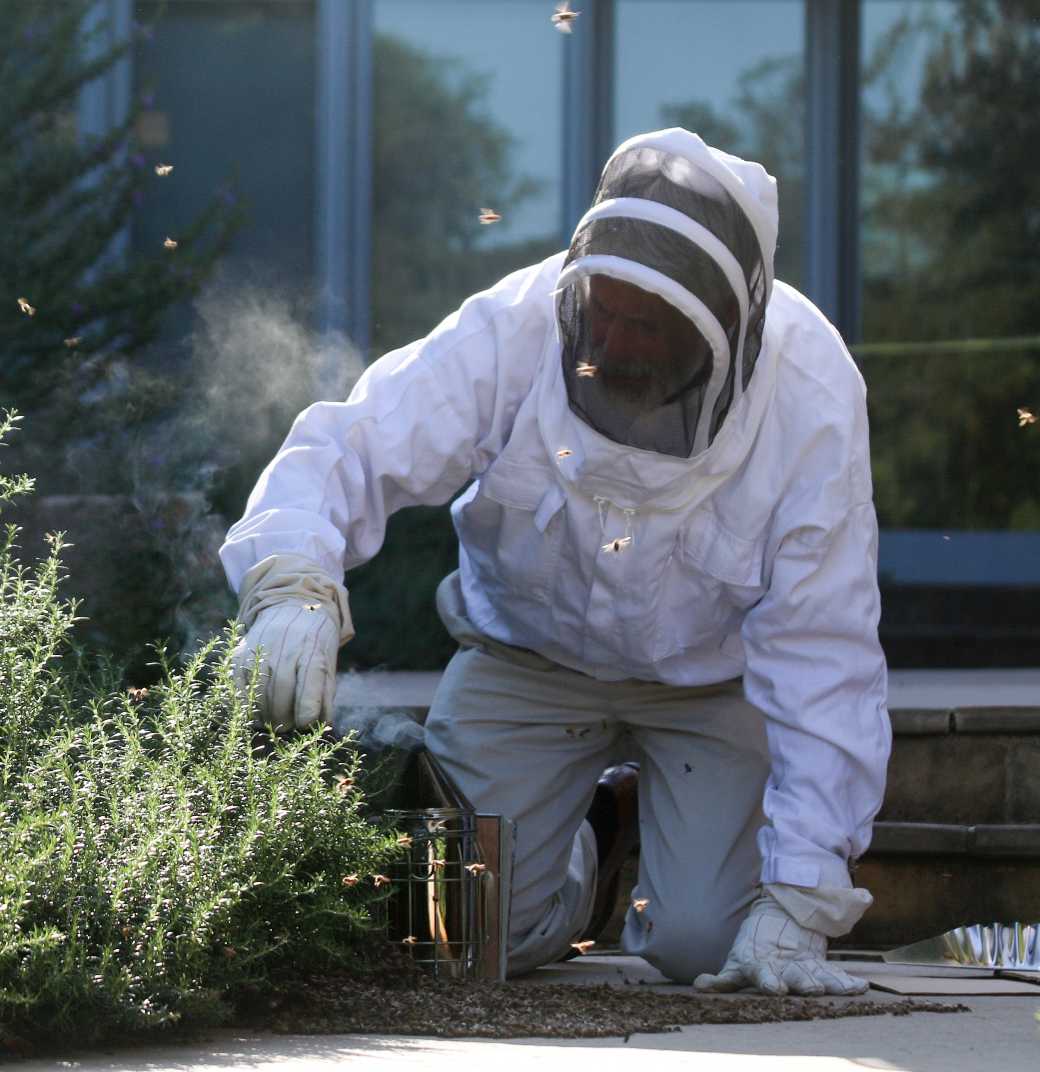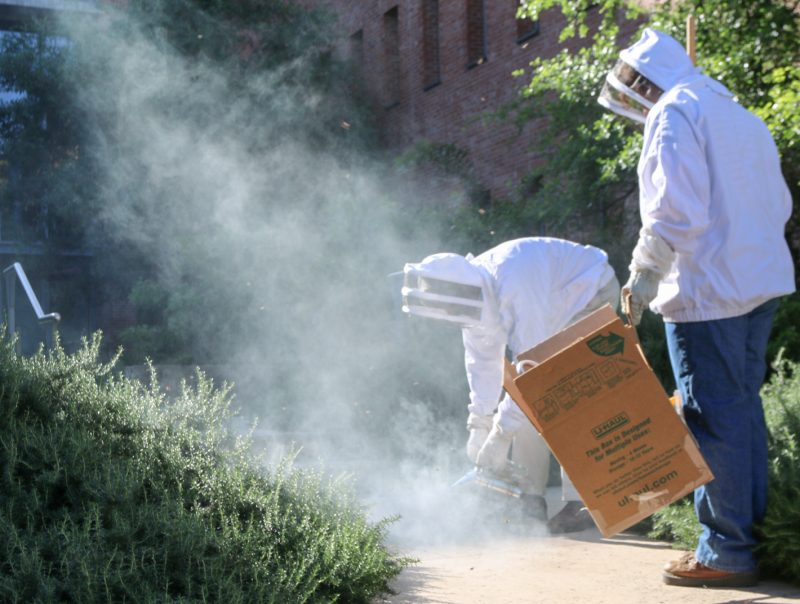Last Thursday, one of Trinity’s bee colonies swarmed outside CSI. The bees had gathered around a new queen bee by a bush on the sidewalk.
Trinity has two hives that are housed on the roof of CSI, but neither hive had structural damage, which suggests the colonies decided to create a new queen.
As soon as the hive was spotted, members of Facilities Services were called in. Les Bleamaster, CSI facilities manager and adjunct professor of geosciences said the main priority was student safety.
“My concern yesterday afternoon was to restrict foot traffic, to inform TUPD, Environmental Health and Safety and Facilities of the issue and to let them know the bees are a part of a Trinity sponsored project, and we did not want them exterminated,” Bleamaster wrote in an email to the Trinitonian. “And to ensure that those with the appropriate expertise were informed and responding.”
According to Rebecca Hazen, visiting assistant professor of biology, bees are part of a large order of insects called Hymenoptera, which includes ants and wasps. Hazen explained Hymenopterans hive together and have youth social behavior, which includes a caste system: the queen, who is the only reproductive member of the hive, and her daughters, who forfeit their reproductive rights to care for the colony, as well as male worker bees and drones. Hazen said that eventually one of the daughter bees will become the queen.
“What I believe happened is that our colony has just gotten big, probably too big for the boxes we have. It’s a natural progression,” Hazen said. “So the queen controls the hive with pheromones, and sends out pheromonal signals to the workers that say, you know, ‘We’re getting too big for this colony, and we need to make new queens.’ ”

Hazen explained that this process normally occurs in the springtime and after rain.
Abbi Bowen, sophomore and president of the Trinity Bee Alliance, agreed with this theory.
“Sometimes even before [the bees] make a new queen, the old queen will leave to find a new place for a hive, taking some of the bees with her — about half to less than half of the bees,” Bowen wrote in an email interview.
According to Richard Reed, professor of sociology and anthropology and an adviser to the Trinity Bee Alliance, this split doesn’t negatively affect the old queen.
“The old queen will have enough worker bees to continue,” Reed said. “She’s decreasing her reproductive capacity to make new queens and then the new queen will take her place.”
When Bowen first found out about the swarm, she thought the cause could be one of three things: hive beetles, structural damage to the hives or, as Hazen mentioned, the colony’s decision to pick a new queen.
The day after the bees swarmed, Bowen checked on the hives and found no beetles.
“When I looked at the hives Friday morning, I found that the Flow hive was not too crowded and seemed normal like usual,” Bowen wrote. “When I looked in the Langstroth hive, the honey super we added to the hive last semester is completely full, meaning that the bees likely swarmed because the hive was too crowded.”
Though the swarm seemed to worry students who passed it, Bowen insists the bees are of no harm.
“When they swarm, they’re usually at their calmest because they don’t have anything to protect,” Bowen said. “There’s no honey or anything that they’re protecting. They just want to go to the queen.”
Bowen worked with Reed to safely contain and transport the swarm.
“Dr. Reed placed the bees we caught in a brood box hive, closed off the entrance so the queen wouldn’t escape and gave the bees sugar water to feed on. After a few days he will open up the entrance to let the bees continue as normal,” Bowen wrote.
Reed, who keeps bees at his home, suggested housing this colony at his house for the next few weeks so the hive can regain normalcy.
“I need to do some research to see if a third hive could actually fit on the roof — there might be complications with the close distance of the hives with each other and the small space of the roof,” Bowen said. “In the meantime, I’m going to order supplies for Bee Alliance so we can be prepared for another swarm in case it happens again — hive boxes, frames, and wax sheets.”







